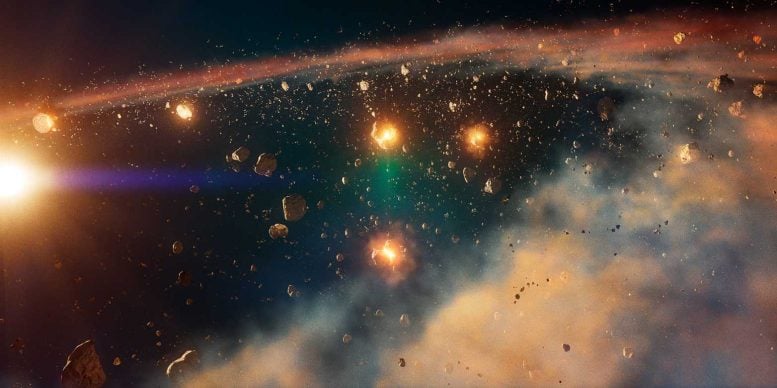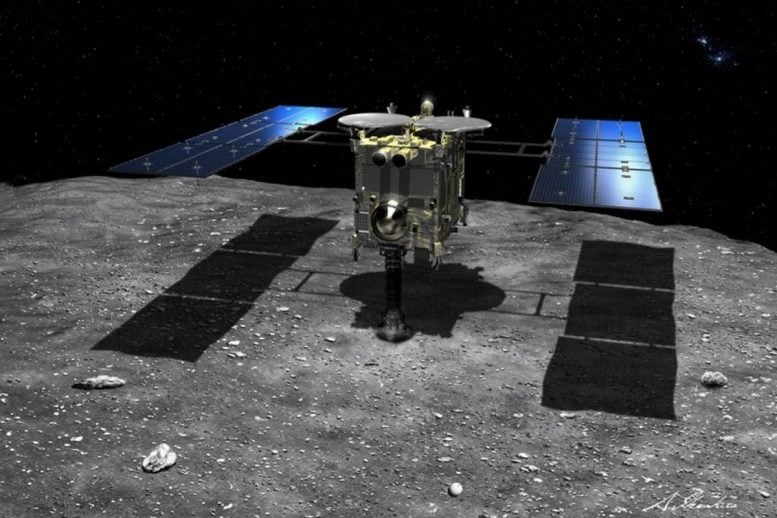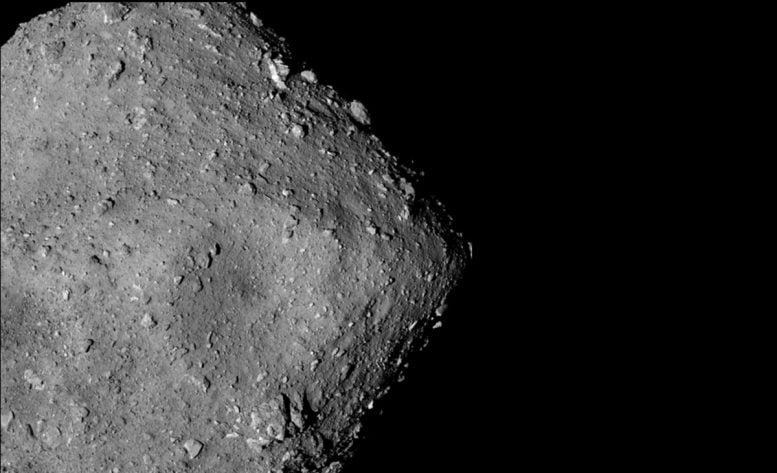
UCLA scientists have uncovered that minerals found on the asteroid were formed as a result of interactions with water over 4.5 billion years ago.
Mineral samples obtained from the Ryugu asteroid by the Hayabusa2 spacecraft of Japan are aiding the University of California, Los Angeles (UCLA) space scientists and their colleagues in gaining a deeper insight into the chemical composition of the early solar system, over 4.5 billion years ago.
Their research, published in Nature Astronomy, has revealed that the carbonate minerals found on an asteroid were formed from reactions with water that was originally present as ice in the early solar system. The scientists used isotopic analysis to show that these carbonates formed within the first 1.8 million years of the solar system’s existence and hold a record of the temperature and composition of the asteroid’s fluid at that time.
The rocky, carbon-rich Ryugu is the first C-type (C stands for “carbonaceous”) asteroid from which samples have been gathered and studied, said study co-author Kevin McKeegan, a distinguished professor of Earth, planetary and space sciences at UCLA. What makes Ryugu special, he noted, is that, unlike meteorites, it has not had potentially contaminating contact with Earth. By analyzing the chemical fingerprints in the samples, scientists can develop a picture of not only how Ryugu formed but where.

“The Ryugu samples tell us that the asteroid and similar objects formed relatively rapidly in the outer solar system, beyond the condensation fronts of water and carbon dioxide ices, probably as small bodies,” McKeegan said.
The researchers’ analysis determined that Ryugu’s carbonates formed several million years earlier than previously thought, and they indicate that Ryugu — or a progenitor asteroid from which it may have broken off — accreted as a relatively small object, probably less than 20 kilometers (12.5 miles) in diameter.
This result is surprising, McKeegan said, because most models of asteroid accretion would predict assembly over longer periods, resulting in the formation of bodies at least 50 kilometers (more than 30 miles) in diameter that could better survive collisional evolution over the long history of the solar system.

And while Ryugu is currently only about 1 kilometer in diameter as a result of collisions and reassembly throughout its history, it is very unlikely it was ever a large asteroid, the researchers said. They noted that any larger asteroid formed very early on in the solar system would have been heated to high temperatures by the decay of large amounts of aluminum-26, a radioactive nuclide, resulting in the melting of rock throughout the asteroid’s interior, along with chemical differentiation, such as the segregation of metal and silicate.
Ryugu shows no evidence of that, and its chemical and mineralogical compositions are equivalent to those found in the most chemically primitive meteorites, the so-called CI chondrites, which are also thought to have formed in the outer solar system.
McKeegan said ongoing research on the Ryugu materials will continue to open a window onto the formation of the solar system’s planets, including Earth.
“Improving our understanding of volatile- and carbon-rich asteroids helps us address important questions in astrobiology — for example, the likelihood that rocky planets like can access a source of prebiotic materials,” he said.
To date the carbonates in the Ryugu samples, the team extended methodology developed at UCLA for a different “short-lived” radioactive decay system involving the isotope manganese-53, which was present in Ryugu.
Reference: “Early fluid activity on Ryugu inferred by isotopic analyses of carbonates and magnetite” by Kaitlyn A. McCain, Nozomi Matsuda, Ming-Chang Liu, Kevin D. McKeegan, Akira Yamaguchi, Makoto Kimura, Naotaka Tomioka, Motoo Ito, Naoya Imae, Masayuki Uesugi, Naoki Shirai, Takuji Ohigashi, Richard C. Greenwood, Kentaro Uesugi, Aiko Nakato, Kasumi Yogata, Hayato Yuzawa, Yu Kodama, Kaori Hirahara, Ikuya Sakurai, Ikuo Okada, Yuzuru Karouji, Satoru Nakazawa, Tatsuaki Okada, Takanao Saiki, Satoshi Tanaka, Fuyuto Terui, Makoto Yoshikawa, Akiko Miyazaki, Masahiro Nishimura, Toru Yada, Masanao Abe, Tomohiro Usui, Sei-ichiro Watanabe and Yuichi Tsuda, 12 January 2023, Nature Astronomy.
DOI: 10.1038/s41550-022-01863-0
The study was co-led by Kaitlyn McCain, a UCLA doctoral student at the time of the research who now works at NASA’s Johnson Space Center in Houston, and postdoctoral researcher Nozomi Matsuda, who works in the ion microprobe laboratory of the UCLA’s Department of Earth, Planetary and Space Sciences.
Other co-authors of the paper are scientists from the Phase 2 curation Kochi team in Japan, led by Motoo Ito. This team is responsible for curating particles from the regolith sample collected from the Ryugu asteroid and analyzing their petrological and chemical characteristics by coordinated microanalytical techniques.
The work was funded by the Japan Aerospace Exploration Agency, NASA, the National Science Foundation’s Instrumentation and Facilities program and several agencies in Japan.
2 Comments
Missing “in” here?
“which was present Ryugu.”
Thanks for the note. Article has been corrected.